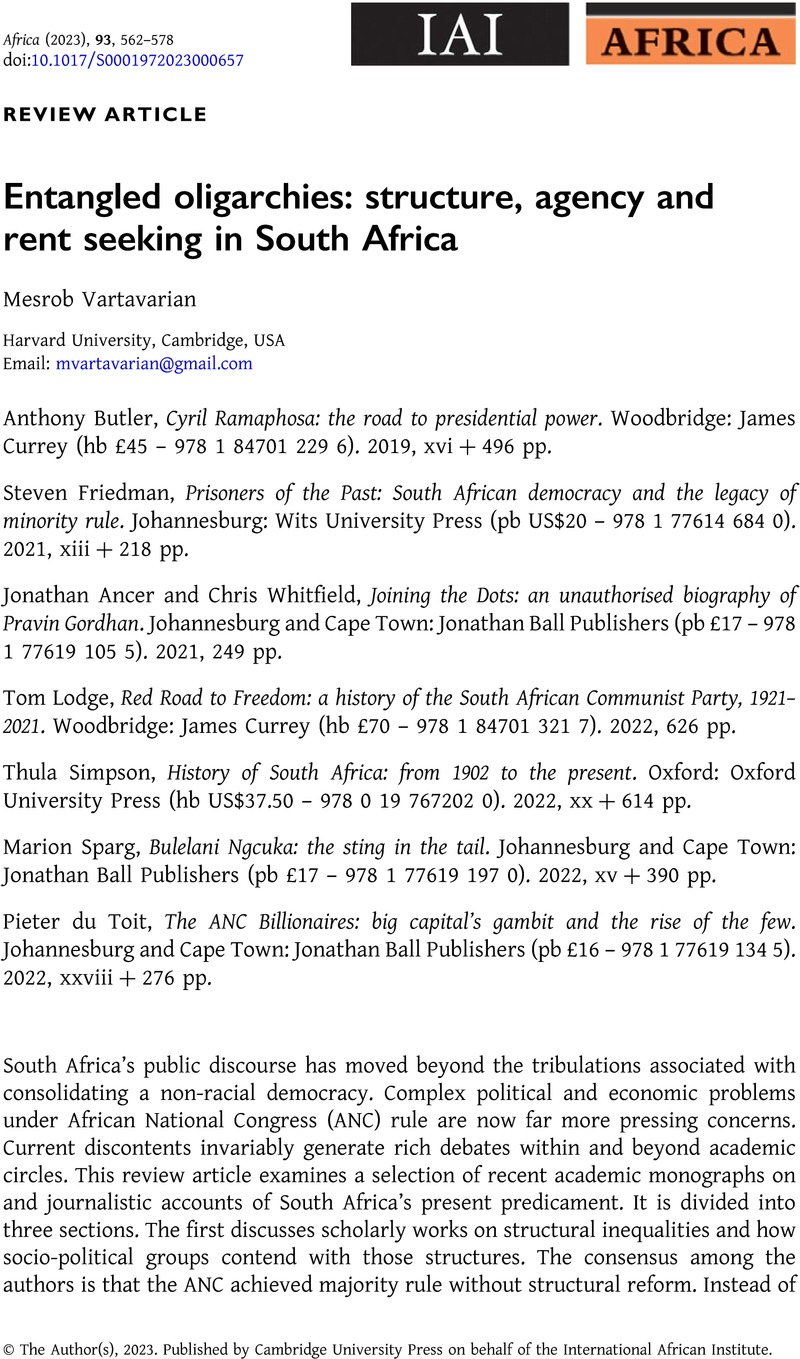Article contents
Entangled oligarchies: structure, agency and rent seeking in South Africa
Review products
Published online by Cambridge University Press: 11 October 2023
Abstract

- Type
- Review Article
- Information
- Copyright
- © The Author(s), 2023. Published by Cambridge University Press on behalf of the International African Institute
References
- 1
- Cited by



